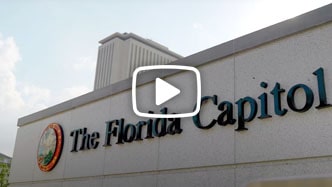Common Fractures Sustained in Car Accidents

You can suffer various injuries when you are involved in a Florida car accident. One of the most common types of car accident injuries is a fracture. In fact, people sustain fractures in Florida car accidents daily. With more than two hundred bones in the body, fractures can happen in several parts of the body and in many ways. However, while any bone in the body can suffer a fracture, some types of fractures are more common than others. As a Florida driver, it is crucial that you understand the common fractures sustained in car accidents. Understanding the common fractures suffered in car accidents can ensure you seek proper treatment after a car accident and can promote quick recovery. Below, we share some of the most common fractures sustained in car accidents.
Arm Fractures
Arm fractures are among the most common fractures people suffer in Florida car crashes. As a car accident happens, a person may throw their arms out to brace themselves for the impact. Unfortunately, such a response can lead to a person sustaining an arm fracture when they hit the seat in front of them, the dashboard, or another part of the car. Typically, arm fractures require a cast to heal.
Femur Fractures
The femur, which is located in the thigh, is the largest bone in the body. It is one of the thickest and strongest bones in the body, yet femur fractures are quite common in Florida car accidents. Femur fractures usually occur because of the tremendous impact applied to the leg upon impact. This can happen when the vehicle crumples into itself during the crash. It can also occur due to the action of bracing oneself for impact. Unfortunately, femur fractures can be extremely painful. Treatment for femur fractures usually involves surgery.
Tibia/Fibula Fractures
The tibia and fibula are found in the bottom half part of the leg above the ankle. Tibia/fibula fractures can occur when the car caves in and traps the legs between the dashboard and the floor. Tibia/fibula fractures can be painful and make it difficult to walk. Treatment of tibia/fibula fractures may include, among others, immobilization with casts, surgery, and physical therapy.
Rib Fractures
Rib fractures are also quite common in car accidents. Rib fractures in car collisions often occur due to the seatbelt or the impact of airbags. Rib fractures can also occur due to the car crumpling during the accident. Because ribs cannot be put in a cast, treating a rib fracture usually involves relying on rest, pain management, and stabilization using devices such as rib belts.
Pelvic Fractures
While pelvic fractures are more common in motorcycle accidents, they can also occur in car accidents. Depending on the severity of a pelvic fracture, the fracture may heal with conservative treatment or require surgery. Recovering from a pelvic fracture may also require physical therapy, bed rest, and the help of crutches.
Clavicle Fractures
The clavicle or collarbone can suffer a fracture quite easily in a car accident. For example, a clavicle fracture can occur due to the seatbelt or when you brace yourself for impact. Clavicle fractures can be treated by immobilization, surgery, and physical therapy.
Legal Help Is Available
After a Florida car accident, contact our Orlando personal injury attorneys at The Pendas Law Firm for legal help. The Pendas Law Firm also represents clients in the West Palm Beach, Fort Myers, Fort Lauderdale, Miami, Tampa, Jacksonville, Bradenton, Daytona Beach, Ocala, Naples, and Melbourne areas.
Source:
flhsmv.gov/traffic-crash-reports/crash-dashboard/






